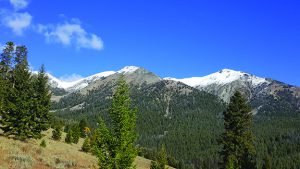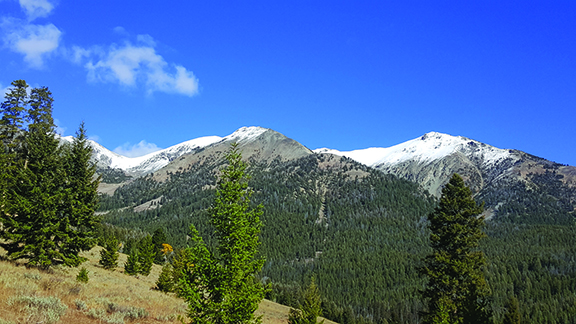BY HANNES THUM
 It’s official now, in case anybody was hoping otherwise: summer has come and gone. As I write this, a cold dawn is coming into the sky and I can see snow on the hills outside my window from yesterday’s storm-—the first real snowfall of the year.
It’s official now, in case anybody was hoping otherwise: summer has come and gone. As I write this, a cold dawn is coming into the sky and I can see snow on the hills outside my window from yesterday’s storm-—the first real snowfall of the year.
So, we suddenly tilt and slip into winter.
This is about the normal time of year for this transition. Those of us who spent our childhoods in this valley or who have children spending their childhoods in this valley know that we never make it to a Halloween without having to factor the cold temperatures into our costumes. I can’t remember an October without being able to see white hillsides somewhere near town.
The phrase “altitude mimics latitude” is something that I heard in high school biology class and something that comes to mind at this time of year. The idea behind that phrase is that going up in altitude (up a mountain, say) creates similar biological conditions to going up in latitude (toward the Arctic, say).
The low, stunted plant growth (described by my favorite German compound word: “krummholz”) and tundra-like conditions that exist in the high alpine cirques in the Sawtooths is very similar to the ecological landscape in interior Alaska and in far north Canada. Lower elevations like the lower reaches of the Big Wood have comparatively milder conditions, more similar to areas farther south on the globe. Whether you are going up or going north in your travels, you start to encounter tougher weather, cooler temperatures, and longer winters. Altitude mimics latitude. Hyndman Basin mimics the Yukon. The top of Borah mimics Siberia.
The change of seasons magnifies this effect. Because of the way our planet has a slant to it (around 23.5 degrees, by the way), there are times of the year when the sun more directly shines on Idaho and times when it less directly reaches us. Winter is the time of year when we face the sun less and face the infinite blackness of space more.
So, we are being thrust (in a sense) northwards at this time of year. As the sun drops a little lower in the sky each day and as the days get shorter and shorter, our little valley will have the characteristics of higher latitude locales. Temperatures will drop and darkness will settle in—our effective solar input will be like that of Alaska and plant life will fade away accordingly, until the springtime.
It also feels like we are rising. As snow levels sink down from the tops of our local peaks right down into the heart of our valley, it is like the effective altitude of our valley changes. Up we go into a colder, higher, more alpine place. We rise up to meet the winter.



